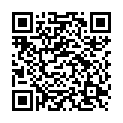|
|
|
| Module code: E802 |
|
4V (4 hours per week) |
|
5 |
| Semester: 8 |
| Mandatory course: yes |
Language of instruction:
German |
Assessment:
Written exam
[updated 12.03.2010]
|
E802 Electrical Engineering, Master, ASPO 01.10.2005
, semester 8, mandatory course
|
60 class hours (= 45 clock hours) over a 15-week period.
The total student study time is 150 hours (equivalent to 5 ECTS credits).
There are therefore 105 hours available for class preparation and follow-up work and exam preparation.
|
Recommended prerequisites (modules):
None.
|
Recommended as prerequisite for:
|
Module coordinator:
Prof. Dr. Alexander Neidenoff |
Lecturer:
Prof. Dr. Alexander Neidenoff
[updated 12.03.2010]
|
Learning outcomes:
After completing this course students will have acquired:
- the theoretical fundamentals of metrology, measurement statistics, stochastic processes and error propagation;
- the theoretical knowledge necessary to analyse rival measurement methods and instruments and to create and implement new measurement ideas and techniques;
- specialist knowledge, expertise and practical skills in effective and spectral measurement technologies using both absolute and ‘level’ units. The course focuses on the analytical, computational and practical approaches to handling faulty measured quantities, and inner, outer, passive, active and parasitic disturbances. All measurement and computational procedures must be carried out analytically to any required level of precision or must be estimated and checked by calculation to a degree of precision acceptable for the specified practical application.
[updated 12.03.2010]
|
Module content:
Part 1 – Metrology, measurement error and error propagation
1.1. Physical measurability
1.2. Electrophysical fundamentals
1.3. Types of measuring signals
1.4. Stochastic processes in measurement
1.5. Measurement error and error propagation
1.6. Systems of units: the principles
1.7. The influence of the measurement act on the electrical network
Part 2 – Fundamental aspects of deterministic and stochastic measurement variables
2.1. Fundamental aspects of the time and frequency domains
2.2. Noise transformation
2.3. The original noise level in a signal
2.4. Noise equivalence
2.5. System noise and signal-to-noise ratios
2.6. Interference relativity
2.7. Deterioration factor and noise factor
2.8. Faulty measurement chains and how to analyse them
2.9. The Achilles’ heel of measurement methods
Part 3 – ‘Level calculus’
3.1.Fundamentals of ‘level calculus’ in decibels
3.2.Interference-free transmission on signal transmission paths and the
problem of interference and noise
3.3.The “turbo operator” @
3.4.Level analysis
3.5.Theoretical relationships between the turbo operator @, the degree of
relativity and snr
3.6.Practical applications of the turbo operator @, the degree of relativity
and snr
3.7.Relationships to and contrasts with conventional variables
3.8.Design of signal transmission paths
3.9.Rapid evaluation of noise measurements using the new variables
[updated 12.03.2010]
|
Teaching methods/Media:
Lecture notes, overhead transparencies, video projector, video player, experimental demonstrations
[updated 12.03.2010]
|
Recommended or required reading:
Two-part lecture notes covering the handling of signals, noise and external interference
[updated 12.03.2010]
|


